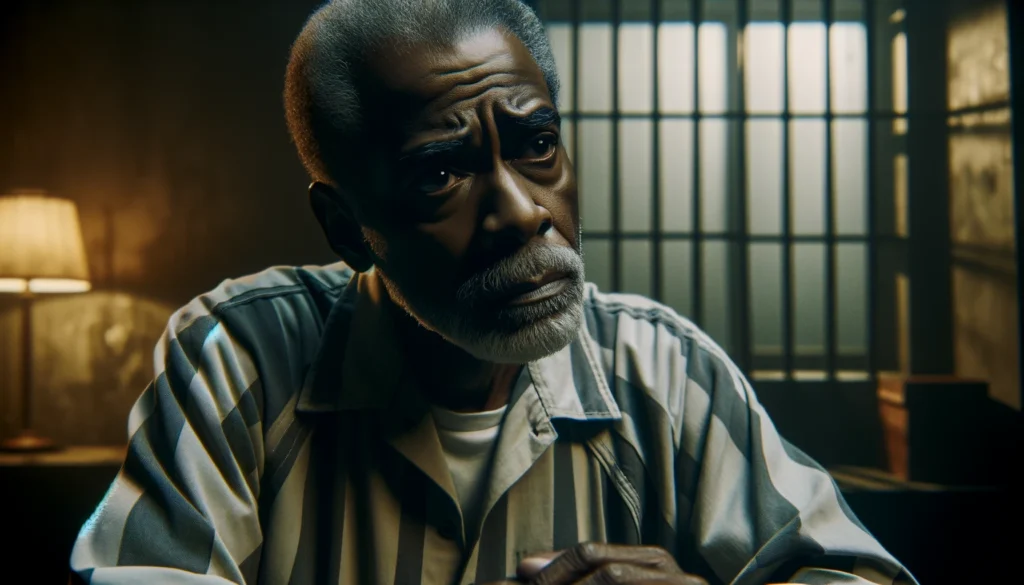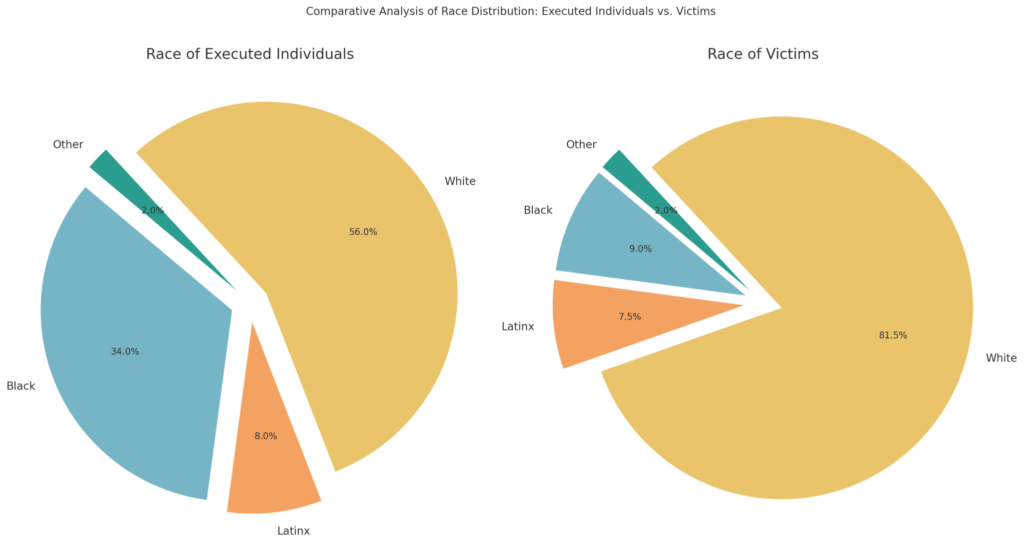
A Closer Look at Botched Executions: Racial Inequality on Death Row
By Darius Spearman (africanelements)
Support African Elements at patreon.com/africanelements and hear recent news in a single playlist. Additionally, you can gain early access to ad-free video content.
| Key Takeaways |
|---|
| Racial disparities in the death penalty system disproportionately affect African American communities, highlighting significant injustice. |
| Botched executions are more likely to occur to Black individuals, with a 220% higher likelihood compared to their white counterparts. |
| Factors such as the age of the prisoner and the execution method significantly impact the fairness of executions. |
| State-level analysis reveals that states like Arkansas, Georgia, and Oklahoma exhibit higher rates of racial disparities in botched executions. |
| Ongoing advocacy and reform efforts are crucial in addressing the systemic racial biases present in the death penalty application. |
Dissecting Racial Disparities in Death Penalty Cases
The death penalty in the United States is fraught with racial disparities that disproportionately impact African American communities, casting a long shadow over the fairness and efficacy of capital punishment. This article explores the intersection of race and botched executions, examining how racial biases permeate the judicial system from sentencing to execution. By analyzing factors like execution methods, age, and state-level disparities, we highlight the urgent need for comprehensive reform to address these deep-seated injustices.
Racial biases significantly affect African Americans facing the death penalty in the U.S. justice system. Studies show that African American defendants are more likely to receive death sentences.
Racial Disparities Deepen Injustice in Death Penalty Outcomes
The Influence of Racial Bias in Judicial Decisions
Racial bias can affect decisions from the moment of arrest and during trials, impacting jury selection and sentencing. Furthermore, African American defendants are disproportionately sentenced to death, highlighting the urgent need for reform in capital punishment practices. Consequently, this issue demands immediate attention to ensure justice and fairness in the legal system.
Studies show that African American defendants are more likely to receive death sentences. (NACDL).
“Defendants of color are more likely to be sentenced to death, particularly if the victim is white.” (NACDL)

Impact of Judicial and Prosecutorial Discretion
Racial bias significantly shapes outcomes in judicial decisions. Jurors and judges, influenced by societal prejudices, often carry these biases into the courtroom, affecting their decisions unconsciously. Such biases are widespread and deeply embedded in the legal process, raising serious ethical concerns.
Furthermore, the discretionary power of judges and prosecutors heavily influences outcomes, reflecting inherent biases and affecting which cases advance to capital punishment. Therefore, addressing these powers is critical for fairness.
Analyzing Botched Executions and Racial Disparities
In-depth analysis shows that Black prisoners are 220% more likely to suffer during botched lethal injections compared to their white counterparts. (NewsOne).
“The analysis shows not only are we botching these executions and causing people torture more often than with many other methods.” (NewsOne)
Over a third of the botched executions lasted longer than 45 minutes. Some executions lasted over an hour, significantly deviating from the intended quick and humane death.
“More than a third of the executions lasted over 45 minutes, with over a quarter enduring an hour or more.” (NewsOne).
Indeed, a significant portion of botched executions involve Black individuals, highlighting the need for revisions in execution protocols and training.
Factors Contributing to Inequitable Execution Outcomes
The Role of Execution Methods
Factors like execution method, the prisoner’s age, and team training significantly impact racial biases in execution outcomes. Technical failures and incorrect drug dosages also contribute to botched executions, regardless of the protocol (Death Penalty Information Center).
Additionally, the type of lethal injection protocol does not reduce the risk of botched executions. Whether using a one-drug or three-drug protocol, issues persist, challenging the assumption that some methods are safer.
Moreover, proper training of execution personnel can reduce errors, yet lapses continue, highlighting systemic issues. This underlines the need for comprehensive training reforms.
Older inmates are at higher risk of experiencing complications during execution.
Furthermore, older prisoners face higher risks during executions. This factor necessitates a reevaluation of risk assessments for older inmates.
“For each additional year of age, the odds of a botched lethal injection execution increased by 6% on average.” (NewsOne)
Ethical Concerns in Execution Practices
Botched executions raise serious ethical questions, defying the notion of a quick and painless death promised by proponents of the death penalty. Hence, addressing these ethical concerns is crucial to reforming capital punishment practices.
Additionally, the choice of execution drugs—whether sodium thiopental, pentobarbital, or midazolam—does not reduce the incidence of problematic executions. This challenges the efficacy of current protocols and calls for a thorough review.
State-Level Analysis of Death Penalty Application
Botched executions are defined as those that deviate from the legal standards for humane executions, causing pain or suffering. Statistically, about 3% of all executions in the U.S. since 1890 have been botched (Death Penalty Information Center). This includes instances where executions were halted or needed multiple attempts to be completed. However, people of color have borne the brunt of those mishaps.
“In Arkansas, 75% of botched executions involved Black individuals, despite accounting for only 33% of all executions.” (NewsOne)
Moreover, similar patterns are observed in Georgia and Oklahoma, where the majority of botched executions also involve Black prisoners. Consequently, these disparities underscore the urgent need for state-level reforms.
Calls for Transparency in Execution Protocols
Additionally, a lack of transparency in execution procedures exacerbates these issues. Promoting transparency is essential for better oversight and reducing disparities, thus reforming death penalty practices.
Advocacy and Calls for Reform
Advocacy groups and legal experts continue to push for the abolition of the death penalty or significant reforms due to racial disparities. The NAACP Legal Defense Fund is at the forefront of these campaigns, emphasizing the need for justice and equity (NACDL).
Moreover, these advocacy efforts often lead to legislative initiatives aimed at reducing racial disparities. Consequently, these efforts are vital for ensuring fair capital punishment practices.
Role of Education and Awareness
Furthermore, raising public awareness about racial biases in death penalty applications is crucial. Educating the public can drive support for necessary reforms. Thus, advocacy groups focus on educational campaigns to inform and mobilize the community.
Additionally, increasing transparency and accountability in death penalty cases is essential. Implementing these measures could significantly reduce racial disparities and ensure fairer legal processes. Thus, transparency is key to systemic change in capital punishment practices.
Conclusion: Seeking Justice in the Shadows of the Death Penalty
The stark racial disparities revealed through studies of botched executions and discriminatory sentencing practices underscore an urgent need for systemic reform in America’s death penalty application. These disparities not only compromise the integrity of the judicial system but also betray the principles of justice and equality. The commitment by advocacy groups to drive legislative changes and increase transparency is pivotal in rallying public support for abolishing or significantly reforming capital punishment.
Efforts to educate the public and mobilize support against racial injustices in capital punishment are crucial for fostering a judicial system that upholds fairness and accountability. Stakeholders across the spectrum, including policymakers, activists, and concerned citizens, must unite to challenge and dismantle the racial biases that mar the application of the death penalty in the United States. Only through collective action and sustained advocacy can we hope to see a future where justice is truly blind to race.
FAQ Section
Q: Why are African Americans more likely to experience botched executions? A: Studies show African Americans face a 220% higher likelihood of botched executions compared to white individuals, largely due to systemic racial biases in the justice system.
Q: What factors contribute to racial disparities in death penalty cases? A: Factors include racial bias in jury selection and sentencing, differences in state-level execution protocols, and the age and health of the prisoners.
Q: How do state-level practices vary in the application of the death penalty? A: Some states, like Arkansas, Georgia, and Oklahoma, have higher incidences of botched executions and racial disparities, underscoring the need for uniform standards and reforms.
Q: What role do advocacy groups play in reforming the death penalty? A: Advocacy groups campaign for legislative changes, educate the public about racial injustices in capital punishment and push for greater transparency and accountability in death penalty cases.
Q: What are the recommended reforms for addressing these disparities? A: Recommended reforms include the abolition or significant revision of the death penalty, enforcement of Racial Justice Acts, and mandatory retraining for all personnel involved in capital punishment procedures.
About the author
Darius Spearman is a professor of Black Studies at San Diego City College, where he has been pursuing his love of teaching since 2007. He is the author of several books, including Between The Color Lines: A History of African Americans on the California Frontier Through 1890. You can visit Darius online at africanelements.org.
